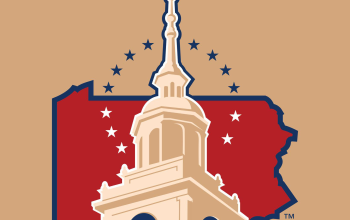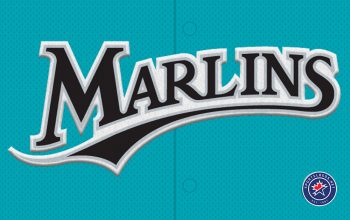A lot of sports teams choose to represent themselves with fierce, intimidating creatures: Tigers, Diamondbacks, Sharks, Chihuahuas, etc. But none of these sounds quite so awful as the swarming, biting insects that infest coastal Georgia twice a year. Sand gnats, colloquially referred to as biting midges, punkies, sand flies, sand fleas, and no-see-ums, are most appropriately called “Flying Teeth” by the website Butterfly Kingdom.
 An article called The Biting Truth of ‘No-See-Ums’ says this about the charming little guy: “They are very small flies (about 1/25-1/10 inch long) whose small but bladelike mouthparts make a painful wound out of proportion to its tiny size. Welts and lesions from the bite may last for days.” Yeah, they said “small but bladelike mouthparts”! And if you’re wondering where you might find sand gnats, you just have to check a map to see if you are “South of the Gnat Line,” which is a real, live, actual thing.
An article called The Biting Truth of ‘No-See-Ums’ says this about the charming little guy: “They are very small flies (about 1/25-1/10 inch long) whose small but bladelike mouthparts make a painful wound out of proportion to its tiny size. Welts and lesions from the bite may last for days.” Yeah, they said “small but bladelike mouthparts”! And if you’re wondering where you might find sand gnats, you just have to check a map to see if you are “South of the Gnat Line,” which is a real, live, actual thing.
“It doesn’t just bite you,” said Jeff Berger, communications and graphics manager for the Single-A Savannah Sand Gnats. “It kind of rips your skin open a little bit.”
People who live south of the gnat line use chemical products, repellents, and home remedies to try to stave off the tiny beasts, usually in vain. The best solutions seem to be to stay inside or simply pack your bags and move away (which is precisely what the Sand Gnats are going to do—more on that below). It begs the question, why would a team adopt a name that serves as a daily reminder of a community’s biggest scourge?

When the Savannah Cardinals changed parent clubs from St. Louis to Los Angeles before the 1996 season, a rebrand was in order. The team looked for an identity that was unique and specific to the city. “Everybody that comes down here and hangs out here for a while, you kind of get to learn what a sand gnat is just because you want to know what just bit you,” Berger said. “It’s definitely unique and it definitely symbolizes what is Savannah.”
Then, after a pause, Berger added this: “Everybody down here seems to like it, from what we gather.”
The logo has remained unchanged since 1996, so clearly fans do like it, in spite of the fact that it’s a reminder of the fact that every spring and fall, the air is filled with invisible razor blades that leave welts and gashes in residents’ skin for days.
“They just like how fierce it is,” Berger said. “It’s a muscular bug holding a bat with a big fang on it, and sunglasses, so it looks pretty cool. People are kind of attached to it.”

The logo features Gnic (pronounced “Nick”) the Gnat, an anthropomorphized bug with those signature dagger teeth, a warped baseball bat (maybe a Wiffle bat left out in the sun?), and sunglasses. And coming from that era of unchecked steroid use in the mid-1990s, there’s one unmistakable trait Gnic exhibits. “We always liked just how buff the guy is,” Berger said. “I mean, it’s just a bug, but he’s ripped out of his mind.”
Gnic wears a hat with a white emblem on it, which Berger says is the subject of frequent questions. “It says ‘SSG,’ for Savannah Sand Gnats,” he said.
The purpose of the SSG logo on Gnic’s hat is to prevent an Inception-style infinite loop of gnat logos, which would occur if Gnic were wearing the team’s regular cap logo, which is Gnic. “It’s just an easier thing to put on a hat—instead of putting him again, and then it’s a never-ending cycle of a gnat wearing a gnat hat,” Berger said.
Gnic was the team’s on-field mascot during the Sand Gnats’ early years, but he was ultimately demoted, because baseball is a business and sometimes you just have to make difficult decisions.
“We had to retire him because he wasn’t doing so hot,” Berger said. “The team wasn’t performing, so we brought in the new performer.”

Enter Gnate the Gnat, the team’s current mascot since 2005 and lead dancer of “The Gnaturals.” (“We really play into the G and the N here,” Berger said.) Not only have the Sand Gnats performed better under his watch, winning the league championship in 2012, but Gnate won the South Atlantic League’s Mascot of the Year award in 2012, 2013, and 2014.
Sadly for fans of painful welts and invisible biting insects, the Sand Gnats are playing their final season in Savannah, and the nickname will be retired when the team moves to Columbia, South Carolina, next season. “We haven’t announced any new team name yet,” Berger said, “but it’s not going to be Sand Gnats. You don’t get any sand gnats in the midlands out there in Columbia.”
The move by the Sand Gnats, a Mets affiliate since 2007, will bring Mets minor league ball back to Columbia, which was home to the Columbia Mets and Capital City Bombers (currently the Greenville Drive) from 1983 to 2004. The move to South Carolina will also draw to a close a two-decade era of one of the weirder logos in minor league baseball.
When the era of wacky minor league baseball logos was in its infancy back in the mid-1990s, the Sand Gnats took to the field sporting a cartoon version of a hateful, horrible, biting insect. It was a risky move that would still be paying dividends if negotiations between the team and the city of Savannah on a new stadium had not fallen through. On August 29, the Sand Gnats will host Gnate Appreciation Night, and the celebration will continue throughout the team’s playoff run (for which they have already qualified). When the lights go out in Savannah after that last game, though, we’ll say goodbye to a fun, weird logo—but those horrendous bugs will be there forever.













